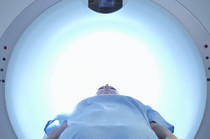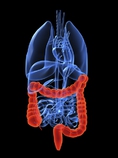Screenings
Vascular Screening
Peripheral artery disease or P.A.D. develops when your arteries become clogged with plaque or fatty deposits that limit blood flow to your lrgs. 1 in every 20 Americans over the age of 50 had P.A.D., a condition that raises the risk for heart attack and stroke. P.A.D. does not always present with symptoms. So it is very important to get screened. At Owensboro Heart and Vascular, we offer 3 simple, non invasive tests for vascular screening-
Carotid Artery Ultrasound
ABI- Ankle Brachial Index
Abdominal Aortic Ultrasound
Click here for a detailed information about vascular screening.
Full Body Scan
The full body scan is a quick and painless scan of the torso – excluding the head and lower extremities – to screen the most important organs (unlike a normal CT scan which only examines desired parts of the body). A CT scanner is used for this procedure so much of the preparation and methods are the same. To prepare for the scan, the patient will be asked to drink a contrast liquid one hour prior to the scan. The scan itself only takes a few minutes and the patient remains fully clothed. The full body scan can detect such things as heart disease (calcified plaque built up in the coronary arteries); tumors in the lungs, ovaries, liver or other organs of the body which may be cancerous; kidney stones, cysts, and many other abnormalities. Used mainly as a preventative procedure, a full body scan can detect early-stage cancer and heart disease, sometimes before patients have even shown symptoms.
Virtual Colonoscopy
A virtual colonoscopy (also known as VC or CT colonography) is an imaging procedure which uses x-rays and computers to produce 2 and 3-dimensional images of the colon and the rectum. Prior to the scan, the bowels need to prepared; then, the patient will lie on an examination table as the CT scanner takes cross-sectional images of the colon to produce a 3-dimensional image. In comparison to a normal colonoscopy, a VC is much less invasive: in a regular colonoscopy, the physician inserts a tube with a camera attached to the end into the colon. The procedure is used to diagnose colon and bowel disease, including polyps, diverticulitis and cancer. If patients report symptoms such as abdominal pain, irregular bowel habits, and bleeding from the rectum, a physician will order a VC. A VC can detect polyps and irritated tissue as well.
Body Composition Analysis
When it comes to weight loss, everyone talks about BMI. BMI tells only a small part of the story. It serves as a good starting point on the road to weight loss and improved health. The more accurate method to determine health risks related to obesity is through a body composition analysis, or BCA. A BCA reading will not only give you your weight and BMI, but more importantly provides a thorough breakdown of your body’s fat, muscle, and water percentages. The general rule is that the higher your fat percentage, the higher your health risk, especially if most of that fat is sitting around your waist. We have a BCA scale that will provide you with a personalized report that can show you exactly where you fall on the health risk scale.





